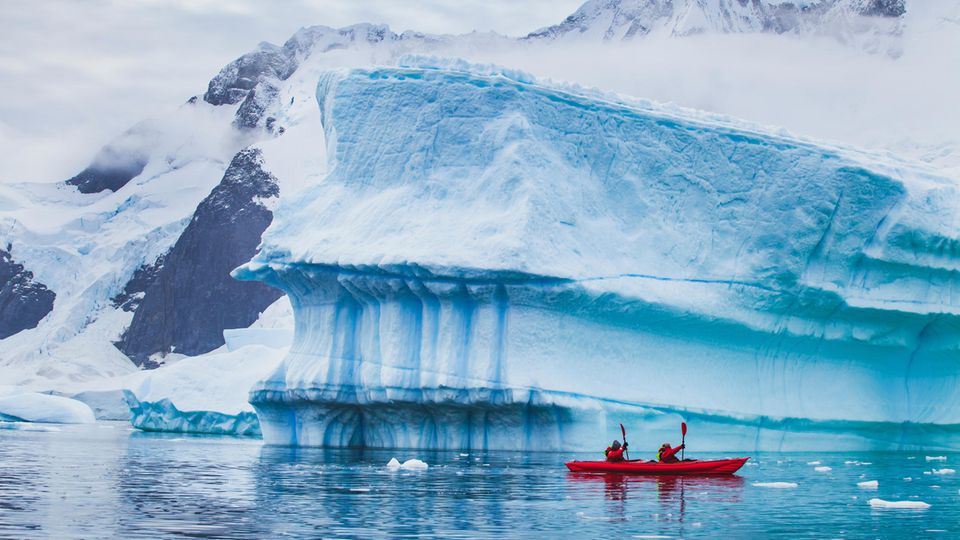Climate crisis
Alarming study: Amazon rainforest facing critical turning point
Aerial view of the Amazon rainforest and the Amazon River covering the countries of Brazil, Bolivia, Colombia, Ecuador, French Guiana, Peru, Suriname and Venezuela.
© Sergi Reboredo / Imago Images
A new study by climate researchers from Brazil calls for action. The Amazon’s valuable ecosystem is on the verge of collapse due to deforestation, drought and wildfires. Researchers advocate immediate recovery measures.
By 2050, the Amazon rainforest could reach a critical tipping point due to water scarcity, land clearing and climate disruption, warns a study from the Federal University of Santa Catarina in Florianopolis. The comprehensive analysis emphasizes that the forest has already exceeded a safe limit and calls for immediate action to restore degraded areas and improve ecosystem resilience. This development, according to scientists, is the result of human activities and the global climate crisis.
International action requires
The study’s lead author, Bernardo Flores, expressed surprise in an interview with The Guardian at the results, which predicted a possible transition from slow to rapid forest decline earlier than expected. The forest is already becoming weaker and more homogeneous, he said. “It will accelerate rapidly by 2050. We must respond now. Once we reach the tipping point, we will lose control of how the system will behave.”
This requires urgent international action, as even a local halt to deforestation cannot prevent collapse as long as there is no global reduction in climate-damaging CO2 emissions.
The Amazon forests have withstood climatic fluctuations for 65 million years. However, they are now heavily burdened by drought, heat, fire and deforestation. This results in forests in many areas producing less rain than before and now emitting more carbon, which has negative impacts on the climate.
Amazon rainforest facing irreversible changes
Over the past two decades, there have been concerns about a potential tipping point in the Amazon. Previous results suggested this could happen if 20 to 25% of the forest was cut down. The new study from the Federal University of Santa Catarina in Florianopolis goes one step further and examines factors that cause water shortages and critical limits. If these are exceeded, it could lead to forest collapse at local, regional or even ecological levels.
The researchers estimate that by 2050, 10% to 47% of Amazon forests will face increasing disturbances, which could trigger unexpected ecosystem-wide changes and have a negative knock-on effect on regional and global climate change.
Scientists recommend limiting deforestation in the Amazon to 10% and keeping global warming to 1.5°C above pre-industrial levels. However, an overshoot has already been identified: 15% of the Amazon has been cleared, another 17% has been damaged by human activities such as deforestation and fires, and another 38% may be weakened by persistent droughts.
From rainforest to savannah: study reveals drastic changes in the Amazon
Using current field-collected data and computer models that incorporate regional and global climate trends, the study traced three plausible ecosystem trajectories: a white sand savannah, a degraded open rainforest canopy, and a degraded forest – all three trajectories would increase drought and fire spread bring forth. The people living on site would also be exposed to potentially unbearable heat.
Changing rainfall patterns in the Amazon have led to drought in parts of the central and peripheral Amazon forest since the early 1980s. In the southern Bolivian Amazon, annual rainfall has decreased by up to 20 mm, while western and eastern regions are becoming wetter. These trends could lead to a change in the resilience of the ecosystem, causing some regions to become savannahs while most of the Amazon remains in its poor condition.
These changes have far-reaching impacts on local and regional populations. The Amazon is home to over 10% of the world’s biodiversity, stores large amounts of CO2, contributes significantly to precipitation and is crucial for the supply of moisture in South America. Although the importance of the Amazon to the world’s climate and human existence is well known, its complexity remains not fully understood, which in turn can lead to unpleasant surprises.
“We have to expect that things will happen sooner than we thought. We have to approach this with a very precautionary approach. If we lose the Amazon, it would be problematic for humanity,” warns Bernardo Flores in the Guardian.



